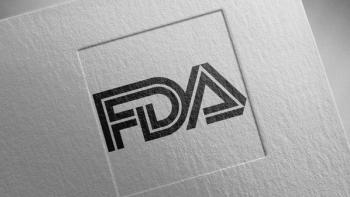
Study of OneTouch Verio Flex® Meter and OneTouch Reveal® Mobile Application
Experts provide an overview of a study on the use of the OneTouch Verio Flex meter paired with the OneTouch Reveal mobile application in the management of diabetes.
Episodes in this series

Elizabeth Holt, MD, FACE: The authors of this study talk about how previous literature has demonstrated improvements in hemoglobin A1C [glycated hemoglobin] levels when blood glucose–monitoring technologies are utilized compared with usual care practices. They say the improvement has been further amplified when blood glucose–monitoring approaches are paired with structured monitoring practices. The study we’re going to look at is built upon previous work. It examines real-world patient data from more than 17,000 individuals with diabetes, utilizing a connected blood glucose meter plus a mobile app. It demonstrates a positive association between increased use of the app and blood glucose readings and range. The study we’re going to look at further explores these benefits and blood glucose associations in a larger patient population with a longer duration exposure to the diabetes devices.
This study used real-world evidence to look at the OneTouch Verio Flex blood glucose meter paired with the OneTouch Reveal mobile app and how it improved glucose metrics and control in patients with diabetes. The OneTouch Verio Flex meter has a ColorSure Dynamic Range Indicator on the face of the meter that helps to visually delineate if blood glucose readings are above, in, or below range. You can see some screens on the smartphone from the OneTouch Reveal mobile app.
In the study design, data from more than 144,000 patients from within the OneTouch Reveal app database were anonymized. Then the key study end points were analyzed, looking at the first 14 days using the OneTouch Verio Flex meter with the OneTouch Reveal app as the baseline and comparing it with a 14-day period prior to the 90- and 180-day time points using these systems. They looked at pairs within subject differences at each time point. Patients were included if they had at least 90 readings over 90 days or 180 readings over 180 days. The data were collected from January 2012 to August 2022.
The study end points looked at glucose outcomes and at glycemic indicator categories. Hypoglycemic is defined as being less than 70 mg/dL, in range is 70 to 180 mg/dL, and hyperglycemic is over 180 mg/dL. They also looked at app engagement and defined that as the number of app sessions per week and the number of minutes spent on the app per week. There were 2 data sets, looking at 90 days and 180 days. The patients were looked at separately: the population with type 1 diabetes and the population with type 2 diabetes. In this table, you can see the numbers in each group.
Transcript edited for clarity
Newsletter
Enhance your clinical practice with the Patient Care newsletter, offering the latest evidence-based guidelines, diagnostic insights, and treatment strategies for primary care physicians.


































































































































































































































































































































